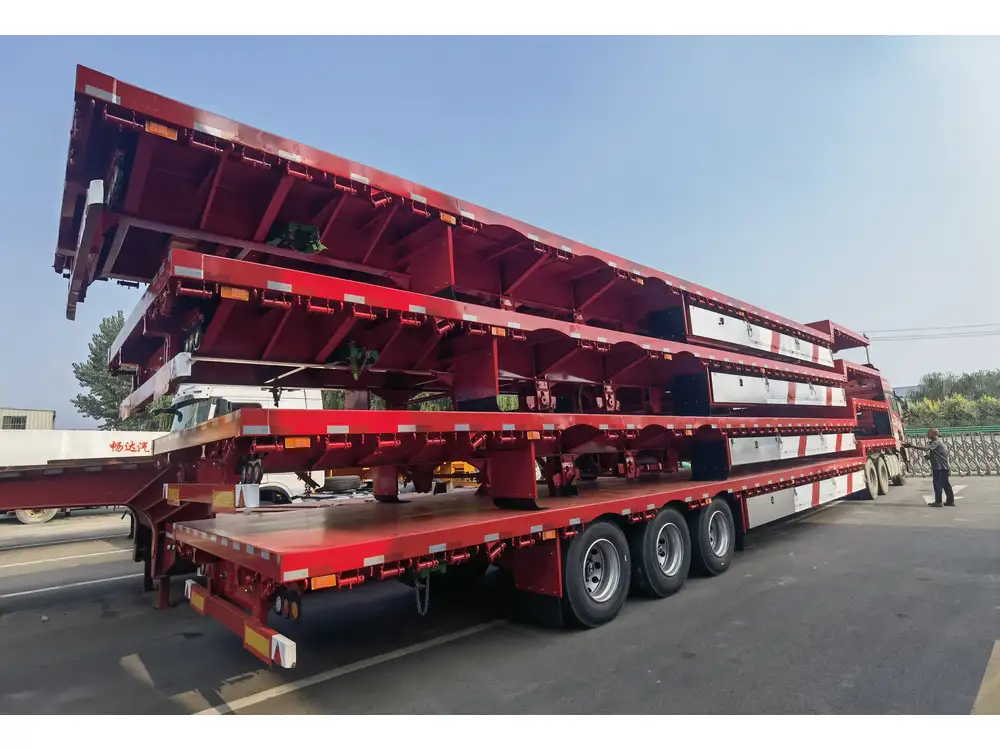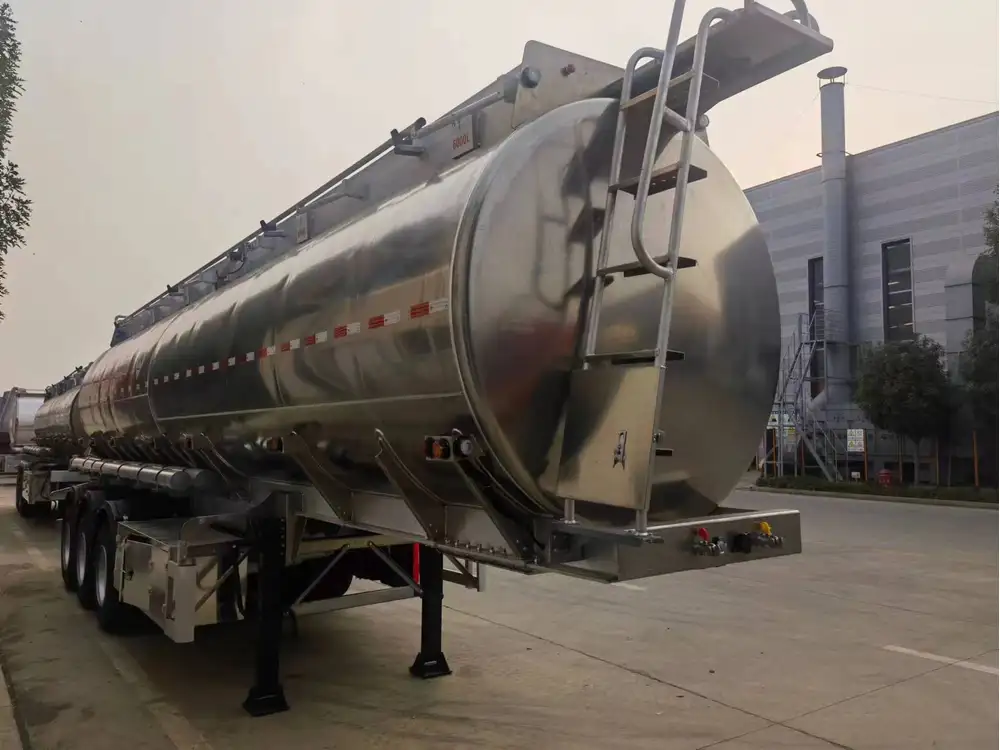Transporting a boat efficiently and safely is a common question for boat owners and operators. The option of using a flatbed trailer for this purpose raises many intriguing points. In this article, we explore the intricacies of placing a boat on a flatbed trailer, the types of trailers available, considerations for successful transportation, and best practices to ensure both safety and compliance with legal regulations.
Understanding Flatbed Trailers: A Basic Overview
What is a Flatbed Trailer?
Flatbed trailers are distinguished by their open platform design, which lacks sides and a roof. They offer versatile loading options, making them suitable for a variety of cargo, including vehicles, lumber, and equipment. The absence of sides simplifies the loading process, allowing for easy access from any angle. For boat transport, this characteristic can be particularly advantageous.

Types of Flatbed Trailers
Standard Flatbed Trailers: These are the most common variety, featuring a flat, level surface that provides ample space for transporting larger items, including boats.
Drop Deck Trailers: Also known as lowboy trailers, these have a lowered deck, which enables easier loading for taller cargo. This can be beneficial for larger boats that exceed a standard height.
Extendable Flatbed Trailers: Ideal for oversized loads, these trailers can expand to accommodate longer or wider boats securely.
Specialty Trailers: For certain boat types, like yachts or sailboats, a specialty flatbed trailer may offer specific design features that provide added support.
| Trailer Type | Description | Best Use |
|---|---|---|
| Standard Flatbed | Open platform without sides | General boat transport |
| Drop Deck | Lower height for tall loads | Taller boats |
| Extendable Flatbed | Adjustable length to accommodate oversized loads | Longer boats |
| Specialty Trailers | Designed for specific types of boats | Yachts, sailboats |
Can You Safely Load a Boat on a Flatbed Trailer?
Factors to Consider Before Loading
Weight Capacity: Each trailer has a specific weight limit. Ensure that the combined weight of the boat and any additional gear stays within this limit to prevent accidents and trailer damage.
Boat Size: Measure the dimensions of your boat to ensure it fits comfortably on the flatbed. An oversized boat may hang off the edges, posing safety risks.
Tie-Down Points: Utilize secure tie-down points on both the trailer and the boat. These points must be strong enough to hold the boat in place during transit.

Loading Procedures
Preparation: Prior to loading, ensure that the trailer is parked on a flat surface. Remove any obstacles around the trailer and boat.
Utilizing Ramps: If the boat is too heavy to lift manually, using ramps can facilitate easy loading and reduce the risk of injury. Make sure the ramps are securely attached and capable of holding the boat’s weight.
Centering the Boat: While loading, ensure that the boat is centered on the trailer. An uneven weight distribution can compromise the trailer’s handling while on the road.
Securing the Boat: Once the boat is on the trailer, secure it using ratchet straps or heavy-duty rope. Anchor the straps to the trailer frame and the boat’s tie-downs to prevent shifting during the trip.
Safety Precautions
Use of Chocks: Place wheel chocks beneath the trailer wheels to prevent the trailer from rolling while loading.
Team Effort: Perform the loading process with a helper to facilitate communication and ensure safety measures are followed.
Proper Gear: Wear appropriate gear, including gloves and sturdy footwear, to safeguard against accidents while loading.
Legal Considerations for Transporting a Boat on a Flatbed Trailer

Registration and Licensing
Trailer Registration: Confirm that your flatbed trailer is legally registered in your state. Many jurisdictions require registration and proof of ownership.
Licensing: Depending on the weight of the trailer and boat combined, additional licensing might be required for the driver. Always check local regulations.
Weight and Dimension Regulations
Weight Limits: Be aware of highway weight limits. Overloading can lead to fines and safety hazards.
Length Restrictions: Many states have specific regulations regarding the maximum allowable length of vehicles on public roads. Ensure that your total length—trailer plus boat—complies with these regulations.
Permits for Oversized Loads: If your boat exceeds standard size dimensions, you may need a special permit for transport. This often includes restrictions on travel times and routes.
Advantages of Using a Flatbed Trailer
Easy Access for Loading: The open design allows for convenient loading and unloading from multiple angles.
Versatility: Flatbed trailers can be used for various forms of transport beyond boats, making them a practical investment.
Stability: A well-secured boat on a flatbed trailer generally provides a stable transport solution compared to other trailer types.
Visibility: With the boat on a flatbed, both the driver and other road users have good visibility, reducing the likelihood of accidents caused by obstructed views.

Conclusion: The Final Word on Flatbed Trailer Use for Boats
Transporting a boat on a flatbed trailer is indeed a feasible option, given proper planning, compliance with local regulations, and adherence to safety procedures. By understanding the intricacies of trailer types, loading methods, and legal requirements, boat owners can enhance their transport efficiency while minimizing risks.
Before embarking on your next boating adventure, ensure that you conduct thorough research or consult with a professional to clarify any concerns surrounding the use of flatbed trailers. With the right tools and knowledge at your disposal, loading and transporting your boat can be a seamless process, allowing you to focus on enjoying your time on the water.
Frequently Asked Questions
What Size Flatbed Trailer Do I Need for My Boat?
- Measure your boat’s length, width, and height, and then choose a flatbed trailer that accommodates these dimensions while accounting for any additional gear.
How Do I Secure a Boat on a Flatbed Trailer?
- Use heavy-duty ratchet straps or ropes to secure the boat to the trailer’s frame. Make sure to attach them to designated tie-down points to avoid damage during transport.
Are There Weight Restrictions for Flatbed Trailers?
- Yes, every flatbed trailer has a specified weight limit. Refer to your trailer’s owner manual to determine its capacity.
Can I Use a Flatbed Trailer for Different Boat Types?
- Yes, flatbed trailers are versatile and can accommodate various boat types, as long as the dimensions and weight comply with the trailer’s capacity.
What Permits Do I Need for Transporting an Oversized Boat?
- Regulations vary by state, but if your boat exceeds length or weight limits, you may need special permits that dictate travel rules and routes.
This comprehensive guide consolidates essential information for anyone considering using a flatbed trailer to transport a boat, thus elevating the reader’s understanding while facilitating informed decision-making for a successful transport process.



